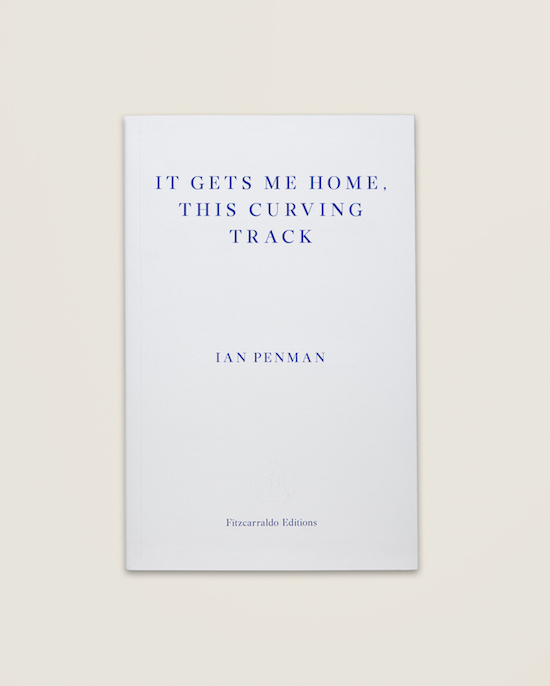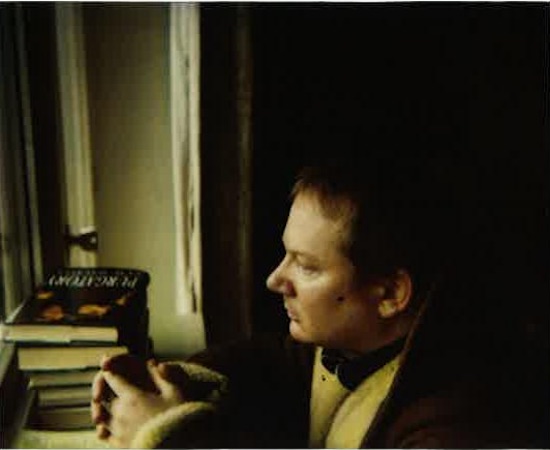Image courtesy of Ian Penman
For the poet WH Auden, whose 1958 poem ‘Walks’ gives this slim but weighty volume of works by the music critic and essayist Ian Penman its title, home became the bedrock of much of his later work – not least his 1965 collection, About the House. But for Penman, whose selflessness (“…re-reading some of these pieces again… I was surprised by how much of my life I occasionally let slip”) ensures that his life takes a backseat to those of the musicians he examines here, it is Auden’s image re-visualised as “a lovely description of spinning vinyl” that inspires the name of his collection.
A gathering of work previously published by City Journal and London Review of Books, Penman’s subjects are a canny mixture of legend (James Brown, Charlie Parker, Frank Sinatra, Elvis, Prince), fascinating outlier (John Fahey, Steely Dan’s Donald Fagen), and movement (an unflinching unpicking of the continuing Mod revival). Many of these figures have been done to death, of course, but Penman confronts the spectre of biography-overload by referencing key works he admires, and some he doesn’t, fusing his own arguments with other writers’ missteps or apparent lapses in taste. It’s a tactic that benefits the reader, casting light on differing viewpoints and, as evidenced by both a bibliography and ‘discography/mood map’, signposting further recommended reading.
Resist any immediate temptation to dip in and out, heading for those chapters where you clock the name of your favourites. Instead, do the straight read, beginning with a careful examination of the birth of Mod and a vociferous takedown of its various slack copyists (“Noel Gallagher has a tiny bit more claim to Mod bona fides, although Oasis’s boilerplate music, where the Flintstone rock aesthetic reigns supreme – to a point just short of prophylaxis – seems about as far from the original cosmopolitan dream of Mod as it’s possible to get”) and closing with what is effectively a forty page biography of Prince.
That latter piece (a recent highlight of an absolutely essential publishing year so far for the London Review of Books) makes for a riveting and troubling read. Penman charts, with care and precision, Prince’s journey from undeserving target of the boo boys at the by-now legendary 1981 Rolling Stones support slot, to his final hours: “He died alone, of course, in the middle of the night, between floors at Paisley Park, a heartbeat away from his studio. The middle of the night, when names and colours matter least.”
Penman deftly picks through Prince’s most frustrating choices, accepting of the side roads our most valuable mavericks force us down. He – correctly – rails against much of the later catalogue, with its “ego bomb manifesto”, but shines a light on Prince’s last bout of live touring. “And while it may not have been a meaningful solution to his long-term creative problems, maybe revisiting the emotions buried in those songs might have helped jog loose something inside.”
Similarly, the chapter on Sinatra declares the writer’s love without necessarily submitting to all of the high-stacked reputation. Here, with so much focus on the albums that still live in the shadow of the perceived masterworks, there is opportunity to listen and learn in equal measure. For those of us still entranced by the likes of Songs For Swinging Lovers and In the Wee Small Hours, it’s a delight to suddenly be made aware of the wonderful Sinatra Sings Songs From Great Britain, for example.

The Sinatra chapter is the most fascinating in the book, perhaps because it is the most thematically rich. Penman works up theories around the singer’s unflappable energy (Sinatra released six albums in 1962 alone), while noting just how much of the work’s perceived easy-listening sheen masks a keen social commentary. Returning to his book’s title, he finds that, “There’s an implicit edge to the idea of ‘home’ on Sinatra’s torch song trilogy [In the Wee Small Hours, Sings Songs for Only the Lonely, No One Cares]: this is no longer a small-town white picket fort, the family at the heart of the community… You’ve just moved to the busy and populous city, but feel more lonely than ever.”
Better than that, Penman is quick to attempt to explain Sinatra’s way with a song, an interpretative intelligence like no other. Aside a multitude of on-the-nail summaries (“He can sound on the edge of something trance-like…”), he mourns, rather than mocks, spry talent show imitators who “…miss the centre of gravity, or connective purpose.”
Elsewhere, Penman offers studied insight into the challenges offered by Steely Dan. “Many pop/rock fans,” he notes, “were suspicious and remain so to this day.” He dips into Donald Fagen’s own sprawling account of their history, Eminent Hipsters, to help explain away their enduring perplexity. “[Walter] Becker and Fagen knew all about the occult effectiveness of tone and texture.” The music of Steely Dan, ostensibly so smoothed and prised cleanly from the mould, sounds… haunted? Well of course it does.
The chapter on James Brown is laudably unsentimental, too, and no less insightful as to the lasting effect of the music. Sometimes the greatest detective work requires no more than the rubbing away of a layer of dust. While acknowledging that Brown “made new shapes for American music”, Penman notes that this is not music for the heart, or for the home, either: “any listener can hear the rig under its highway grind.”
Lines like that flavour Penman’s prose throughout and ensure that a book that so artfully marries history and criticism emerges as a joyous celebration of the complex act of writing about music. In his wry introduction, as he considers which artists he might have mistakenly left out, and mentions Solange, Penman is amused by the title of her (then) recently announced album. When I Get Home.
Another time, one hopes. Or, in Penman’s words, “even her big sister.”
Either way, It Gets Me Home, This Curving Track is a stirring reminder that heading home – wherever and whatever that might be – does not have to be an escape from the world but a retreat to a position from where one might view the world, and your place in it, anew. Penman’s worldview is, as it ever was, an abundantly humanist one and this peerless collection of work hits you where you live.
It Gets Me Home, This Curving Track by Ian Penman is published by Fitzcarraldo


